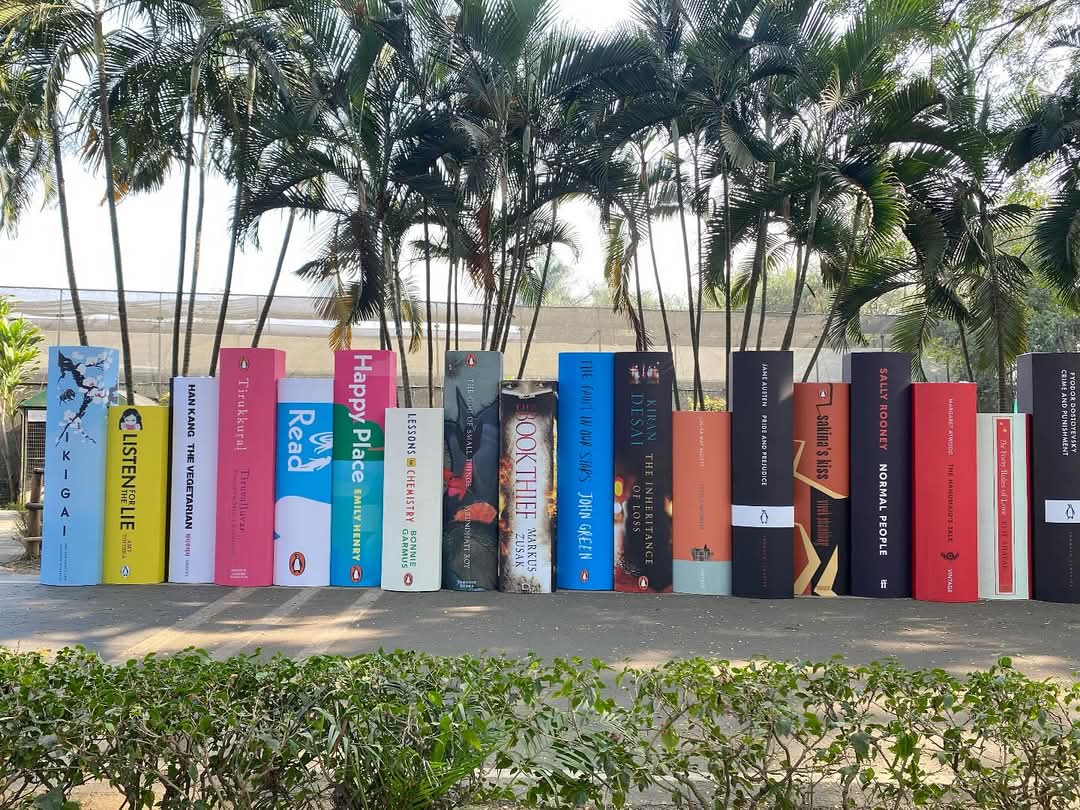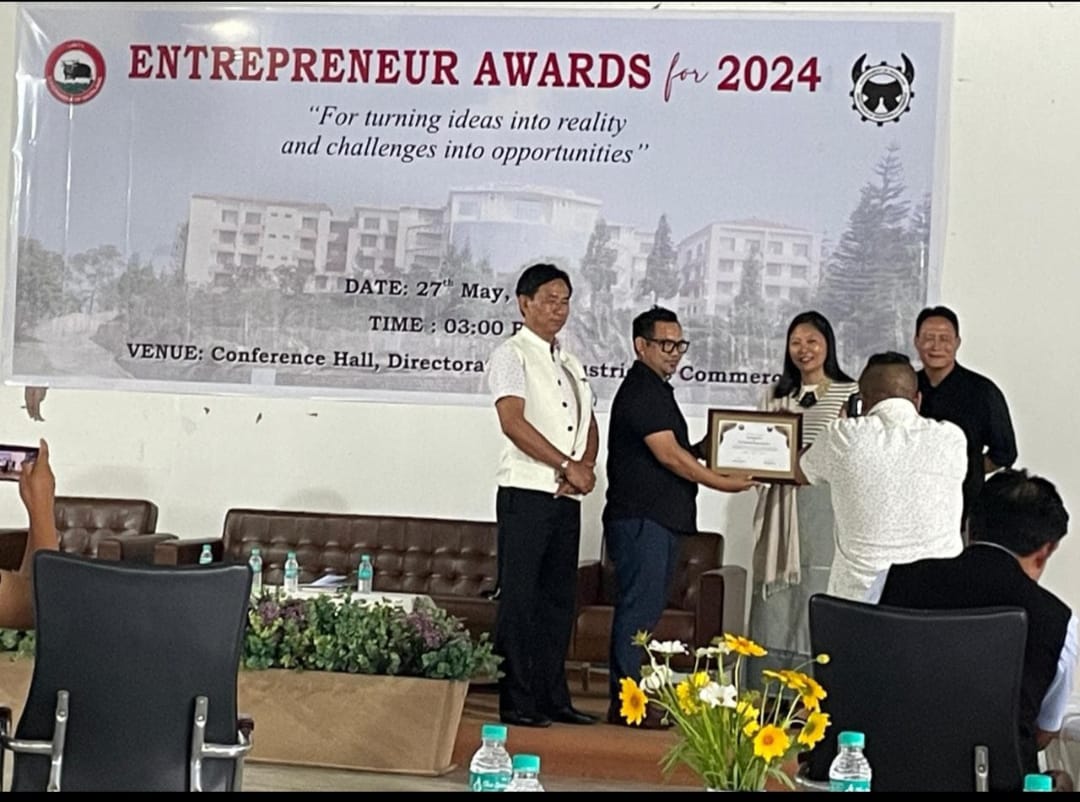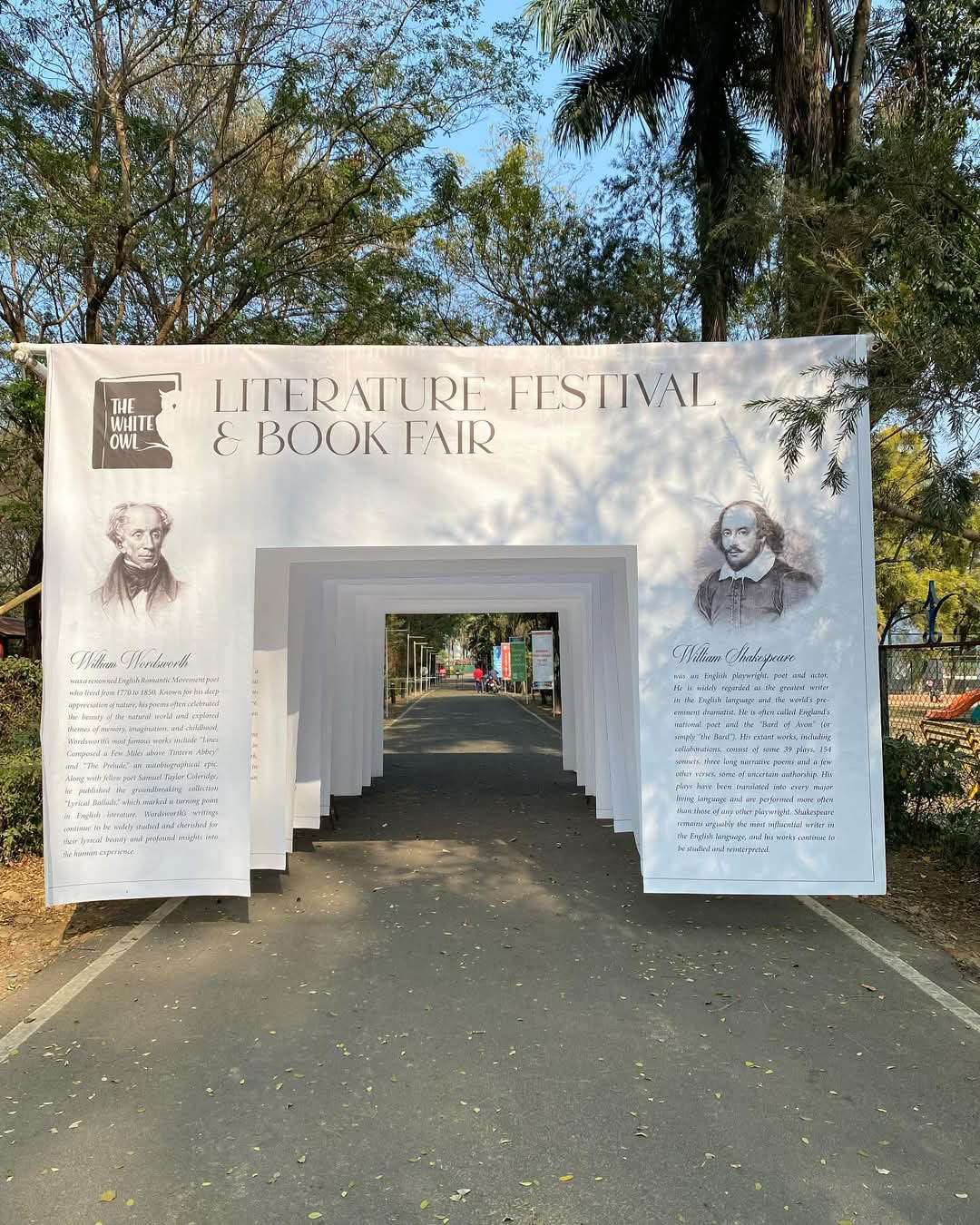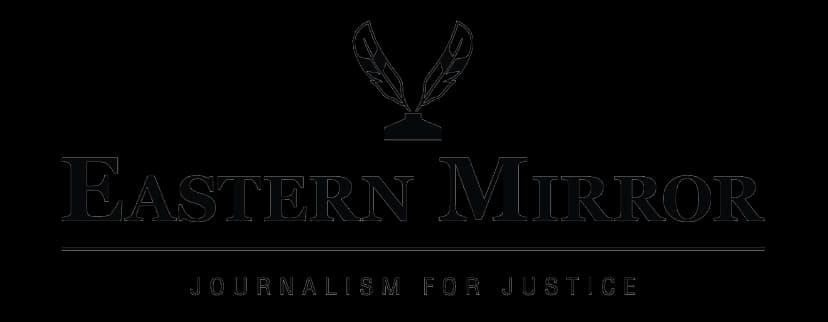FRIDAY, AUGUST 01, 2025
- Home
- Finding a Future in Nagaland’s Printing and Branding Sector
Finding a Future in Nagaland’s Printing and Branding Sector
Amenla Jamir, production manager at Fingerprint Nagaland, never imagined she would end up working in the printing and branding industry.
Published on Jun 3, 2025
Share
- DIMAPUR — Amenla Jamir, production manager at Fingerprint Nagaland, never imagined she would end up working in the printing and branding industry. Her background is in aviation—she worked as a cabin crew member for five years, and her role revolved around hospitality, travel, and interacting with people from all walks of life.
- When COVID-19 struck, she had to leave her job in Delhi and return home to Dimapur. Eventually, she joined Fingerprint as a production manager, despite having no prior experience in the field.
- At first, the role felt overwhelming, but she gradually realised that it allowed her to apply her natural strengths: organising, communicating, managing people, and learning quickly under pressure.
 Amenla
Jamir
Amenla
Jamir- She says the day at their workplace begins with all the employees coming together for a prayer. The work often involves long nights, tight deadlines, and last-minute changes—but her colleagues consistently show up with dedication and a team spirit that inspires her.
- Even when she can be a bit demanding or particular, they listen, adapt, and give their best. It is this shared effort that enables them to deliver quality results, and she feels proud to be part of such a hard-working and creative team.
- According to her, working at Fingerprint has taught her not just about printing but also about trust, patience, and the power of collaboration.
Also read: Building a career in Veterinary Science: Dr. Imchen breaks it down
- In this interview with Eastern Mirror, Amenla shares insights into the evolving printing industry, the skills needed to thrive in it, and the opportunities it offers for aspiring professionals and entrepreneurs in Nagaland.
- What are the main services offered by a business like yours?
- At our printing press, we offer a wide range of services essential for businesses, schools, organisations, and individuals. Our main services include offset printing, used for printing books, newspapers, magazines, brochures, and other materials in large quantities. It gives high-quality results and is cost-effective for bulk printing. Digital printing is ideal for short-run jobs like invitations, certificates, flyers, posters, and business cards. It’s faster and more flexible than offset printing.
- We also offer lamination and finishing, including cutting, laminating, and other finishing touches to make the final product look professional and durable. Design and pre-press services help clients with layout and design, ensuring that what they imagine is properly prepared for printing.
- How has the industry evolved in recent years, particularly in regions like Nagaland?
- The printing industry has changed a lot in recent years, even in places like Nagaland. One major shift is the move from traditional offset printing to digital printing, which is faster, more affordable for small jobs, and allows for last-minute edits. This has made printing more accessible for students, small businesses, and local creators. Another big change is the rise of design and creativity. Clients today want not just printing but also help with layout, branding, and making their materials look professional. So, printing presses now often offer design services too.

Giant book spine installation at The White Owl Literature Festival & Book Fair 2025.
- In Nagaland specifically, we’ve seen more local content being created—college magazines, local books, event materials, and even startup branding kits. People are starting to see the value in telling their own stories and promoting local identity through print. Technology has improved too. Better machines mean higher quality prints and quicker turnaround times. At the same time, we still face challenges like high material costs and limited local suppliers, but we’re learning to adapt and grow with what we have.
- What kind of educational background is useful for someone aspiring to enter the personalised branding and printing field?
- There isn’t one single path, but several educational backgrounds can help, depending on the role you’re interested in. Graphic design or visual arts is very useful for the creative side of printing. If you enjoy designing logos, layouts, or posters, a course in graphic design can give you the right skills in software like Adobe Illustrator, Photoshop, or CorelDRAW. Printing Technology or Media Studies teaches the technical side of printing, like how machines work, how to manage production, and how to ensure print quality. Business or marketing is also helpful, especially for understanding branding and running a printing or branding business.
- IT or computer applications are useful for digital printing, file preparation, and handling new tech tools used in modern printing systems. That said, skills and creativity matter just as much as formal education. Many people in this field are self-taught or started with short courses and learnt the rest through hands-on experience. What matters most is your willingness to learn, adapt, and work with both people and technology.
- Are there particular technical skills or software programmes that students should focus on learning?
- Yes, definitely! If you're interested in working in the printing or personalised branding field, learning certain technical skills and software will give you a big head start. Design software like Adobe Illustrator, Photoshop, CorelDRAW, and InDesign is commonly used in the industry. It also helps to know how to work with file formats, understand resolution and colour modes, and use file-sharing tools like Google Drive or WeTransfer.
- Printing knowledge is useful too—understanding different print formats, paper types, and finishing techniques like lamination, binding, and embossing. Some basic knowledge of printing machines can help if you’re on the production side. Communication and teamwork are also important, as you’ll often work with clients, designers, and machine operators. These tools and skills are not difficult to learn—many free resources and tutorials are available online.
- Can students or individuals from non-technical backgrounds also pursue a career in this?
- Yes, 100%. You don’t need to come from a technical background to work in the printing or personalised branding industry. This industry offers a wide range of roles: if you’re creative, you can go into designing—learning tools like Photoshop or CorelDRAW is something anyone can pick up with practice, no matter your stream. If you’re good with people and communication, you can explore client servicing, marketing, or branding. If you enjoy organising work and handling tasks, there’s scope in production management, logistics, or even starting your own printing-related business.
- A lot of skills in this field are learnt on the job. What matters most is your willingness to learn, your interest in the creative or production process, and your ability to work as part of a team.
- Could you discuss the entrepreneurial opportunities in the sector for young people in Nagaland?
- There are a lot of exciting entrepreneurial opportunities in the printing and branding sector—especially now, as more people and businesses in Nagaland are focusing on local identity, small business promotion, and event culture. One area is custom merchandise and personalised products, with growing demand for custom t-shirts, mugs, stickers, tote bags, and notebooks—especially for school/college events, birthdays, weddings, and local brands. Anyone with basic design skills and access to printing services can start small in this space.
- Design and branding services are also in demand, as startups and small businesses in Nagaland often look for affordable branding—logos, menus, business cards, and packaging design. If you're good at design or communication, you can start offering services as a freelance designer or small studio. Event printing is another opportunity, with steady demand for printed materials like banners, invites, stage backdrops, and brochures for events like church programs, festivals, and college functions. Young people can tap into this by partnering with local printers and focusing on good service and creative ideas.
- Online printing services are growing, and many young entrepreneurs begin by taking orders online, designing at home, and outsourcing the actual printing to local presses. With platforms like Instagram and WhatsApp, it’s easier than ever to market your services. Publishing local content also offers potential—from zines to books and educational materials—for those passionate about storytelling, culture, or education.
- How do you decide which personalised products or services to offer in a market like Nagaland?
- In a market like Nagaland, where communities are closely connected and trends often spread through word of mouth and social media, the key is to listen to local needs and observe what people are looking for. Nagaland has a strong culture of community events—church programs, weddings, school functions, festivals, and youth fellowships—which often need printed materials like banners, invites, souvenirs, and personalised gifts. By understanding the local event calendar and what’s important to people, we can offer services that truly add value.
- Trends in custom t-shirts, stickers, journals, or wall art often start on social media. If we see a growing interest—say, in Scripture-based designs, tribal prints, or minimal aesthetics—we respond by offering products that reflect that. Sometimes, customers ask for things we didn’t originally offer—like custom mugs, eco-friendly packaging, or unique wedding invites. If enough people ask for something, we know there’s a market for it.
- We usually test a new product in small quantities—maybe 10–20 pieces—to see how people respond. If it does well, we offer more. This helps us reduce risk and stay flexible. We also have to think about what can be produced cost-effectively and delivered quickly. Some products might be popular but require machines or materials we don’t have, so we either find a smart way to produce them or wait until we’re better equipped.
- In what ways has technology transformed the personalised branding and printing industry?
- Technology has completely changed the way we work in printing and personalised branding—making the process faster, more creative, and more accessible, even in places like Nagaland. Digital printing allows us to print small quantities quickly and with high quality, which is perfect for personalised items like custom t-shirts, invitations, mugs, or business cards. Thanks to design software like Photoshop, Illustrator, CorelDRAW, and even free tools like Canva, anyone with basic skills can now design high-quality branding materials.
- We no longer rely only on walk-in customers. Many clients send their designs or orders through WhatsApp, Instagram, or email. We also share mockups and proofs digitally, which saves a lot of time and helps avoid mistakes. New tools like laser cutting machines or vinyl plotters allow for custom signage, decals, packaging, and more detailed personalisation that wasn’t possible earlier. Technology has also allowed young people to start design or branding businesses from home. With a laptop and internet connection, you can design for clients in other towns—or even outside Nagaland—without needing a physical shop.

Fingerprint Nagaland being awarded at the Entrepreneur Award 2024 by the Department of Industries and Commerce, Government of Nagaland.
- What is the future scope of the sector in Nagaland and beyond?
- The future of the personalised branding and printing sector in Nagaland—and across the Northeast—is full of potential. As more people and businesses recognise the power of visual identity and local storytelling, the demand for quality printing and branding services will only grow. More young people are starting small businesses in fashion, food, art, and events, and these ventures need logos, packaging, merchandise, signage, and social media design—all of which open up opportunities in the printing and branding industry.
- There’s also a growing appreciation for local identity—tribal patterns, dialects, and Naga culture—which will lead to more demand for customised products that reflect local pride, like clothing, journals, wall art, and handmade packaging. As online presence grows, branding now includes both digital and physical elements, and designers and printers who can work across both will be in high demand. Customers are becoming more conscious of the environment, so the future will likely focus on eco-friendly materials, sustainable packaging, and reusable products—offering a great opportunity for innovation.
- What are some common misconceptions people have about working in this sector?
- There are quite a few misconceptions about the printing and branding industry, especially in places like Nagaland, where the sector is still growing. Many people think this job is only about operating machines, but printing and branding involve creativity, planning, design, customer service, time management, and problem-solving. Some believe it’s a small or dying industry, but the truth is every business, school, event, and organisation needs print and branding—and with the rise of personal brands and small businesses, the demand is only growing.
- Another common misconception is that only students who pursued arts can do design work. While a design background helps, anyone with interest and willingness to learn can pick up design skills. There are many self-taught designers doing amazing work just by practicing on tools like Canva or Photoshop. Some also think you need expensive equipment to get started, but many people begin by focusing on design and coordination, collaborating with local presses to get the work done.
- People often assume it’s not a respected or skilled job, overlooking the detail, precision, and creativity involved in producing quality printed products. When done well, printing and branding can elevate a brand, support a cause, or make someone’s event memorable.
 Entrance
installation by Fingerprint Nagaland at The White Owl Literature Festival &
Book Fair 2025.
Entrance
installation by Fingerprint Nagaland at The White Owl Literature Festival &
Book Fair 2025.- RAPID INSIGHTS
- What’s one gadget you can’t do without at work?
- My phone! It’s my mini office—I use it to coordinate with clients, take quick photos of samples, send updates to the team, and sometimes even design quick layouts or edit files on the go. It keeps everything connected and moving smoothly.
- If your work had a soundtrack, what song would play every day?
- "Stronger" – Kanye West: “That that don’t kill me, can only make me stronger.” Perfect for those crazy deadlines and all-nighters! "Work" – Rihanna ft. Drake: A fun reminder that you’re putting in the effort—and still grooving while doing it.
- Which do you prefer—working late at night or early in the morning?
- I’m naturally a morning person—I love the calm, fresh start to the day when everything feels organised and clear. But in the printing world, most of the real action happens at night. Whether it’s last-minute orders or finishing up big projects, late nights are often part of the job. It’s not always easy, but over time, I’ve adjusted to the rhythm and even started appreciating the unique teamwork and energy that come alive after hours.

